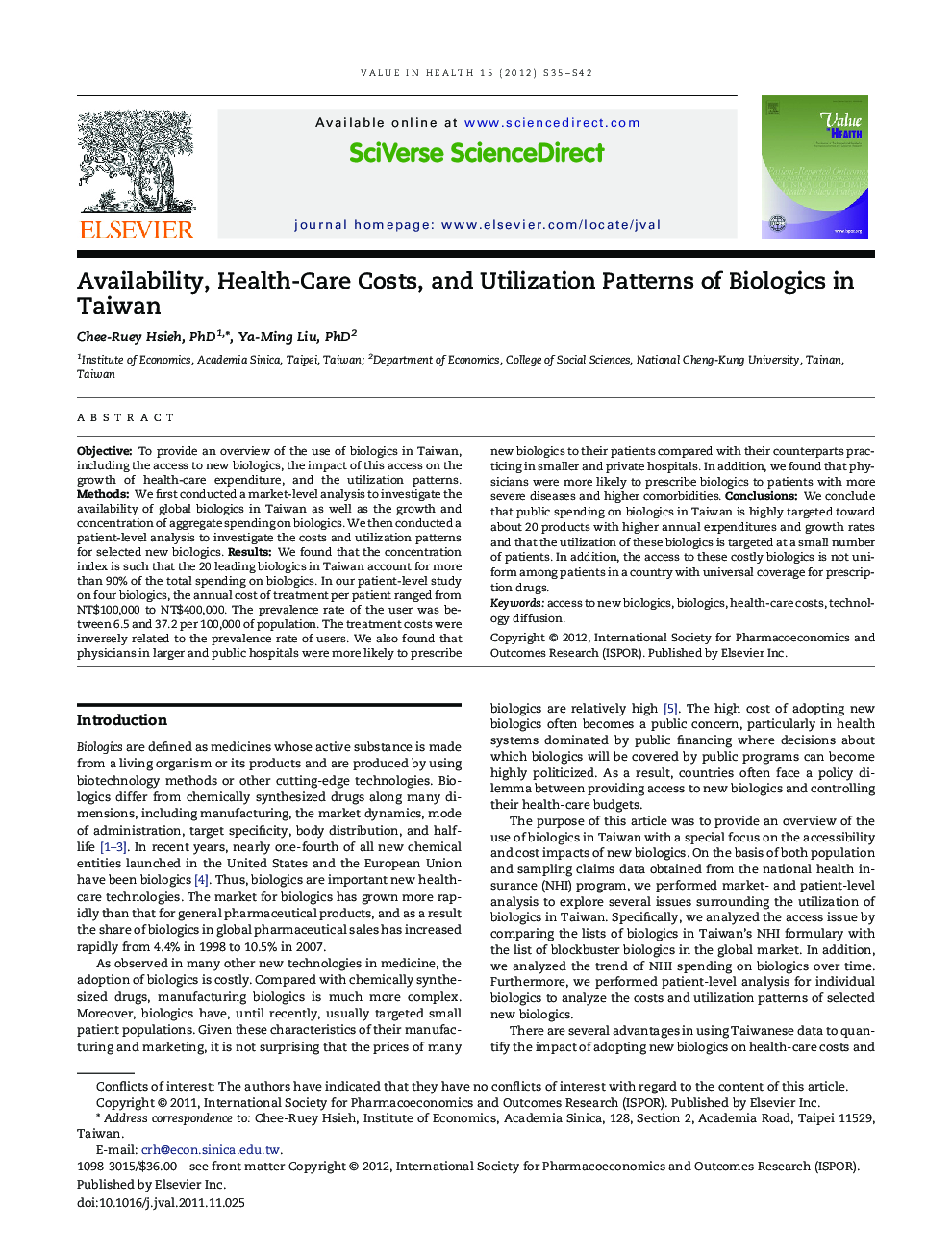| Article ID | Journal | Published Year | Pages | File Type |
|---|---|---|---|---|
| 987770 | Value in Health | 2012 | 8 Pages |
ObjectiveTo provide an overview of the use of biologics in Taiwan, including the access to new biologics, the impact of this access on the growth of health-care expenditure, and the utilization patterns.MethodsWe first conducted a market-level analysis to investigate the availability of global biologics in Taiwan as well as the growth and concentration of aggregate spending on biologics. We then conducted a patient-level analysis to investigate the costs and utilization patterns for selected new biologics.ResultsWe found that the concentration index is such that the 20 leading biologics in Taiwan account for more than 90% of the total spending on biologics. In our patient-level study on four biologics, the annual cost of treatment per patient ranged from NT$100,000 to NT$400,000. The prevalence rate of the user was between 6.5 and 37.2 per 100,000 of population. The treatment costs were inversely related to the prevalence rate of users. We also found that physicians in larger and public hospitals were more likely to prescribe new biologics to their patients compared with their counterparts practicing in smaller and private hospitals. In addition, we found that physicians were more likely to prescribe biologics to patients with more severe diseases and higher comorbidities.ConclusionsWe conclude that public spending on biologics in Taiwan is highly targeted toward about 20 products with higher annual expenditures and growth rates and that the utilization of these biologics is targeted at a small number of patients. In addition, the access to these costly biologics is not uniform among patients in a country with universal coverage for prescription drugs.
